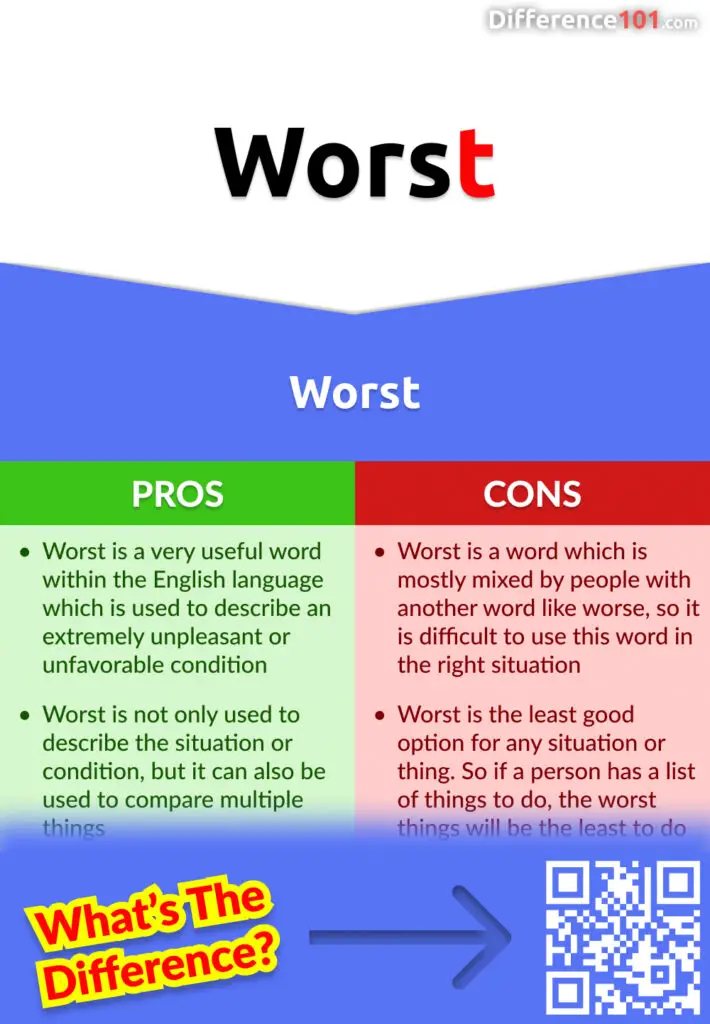What Was The Worst Year For The Steelers? A Look At Their Toughest Seasons
Detail Author:
- Name : Prof. Bennie Krajcik
- Username : jessika.morar
- Email : nhamill@friesen.net
- Birthdate : 1996-09-19
- Address : 91194 Tony Turnpike Suite 154 East Sharonshire, GA 91928-3607
- Phone : +1-616-775-6639
- Company : Keeling-Dickens
- Job : Electro-Mechanical Technician
- Bio : Debitis id quas ut qui doloribus fuga quae quasi. Consequatur et id similique nostrum sapiente ea commodi. Pariatur qui cumque culpa enim consequatur odit rem.
Socials
linkedin:
- url : https://linkedin.com/in/van_official
- username : van_official
- bio : Ut et odit voluptatem sit cum modi.
- followers : 5657
- following : 383
tiktok:
- url : https://tiktok.com/@van_bergnaum
- username : van_bergnaum
- bio : Nesciunt quia et voluptatem soluta.
- followers : 288
- following : 1250
instagram:
- url : https://instagram.com/van.bergnaum
- username : van.bergnaum
- bio : Odio dolores veniam excepturi eos. Qui eius molestias ducimus perspiciatis.
- followers : 6295
- following : 2809
When fans talk about the Pittsburgh Steelers, thoughts often go to Super Bowl victories, Hall of Fame players, and a long history of winning. Yet, every team, even one as storied as the Steelers, has faced moments of true struggle. We might ask ourselves, what truly constitutes the "worst" year for such a proud franchise? It's not just about a bad record; it's about the feeling, the disappointment, and the overall quality of play. As my text suggests, "worst" means the most corrupt, bad, evil, or ill, or perhaps the lowest quality, the most unpleasant, difficult, or severe. We are looking for the season that was the most unfavorable or undesirable, basically.
Thinking about a team's lowest point can be a bit hard for supporters, but it also helps us appreciate the good times even more. A truly difficult season, you know, can feel like a setback that casts a long shadow over everything. It is that kind of year where things just do not seem to click, and the team struggles to find its footing. We are talking about a period where performance hits rock bottom, and the path forward appears, in a way, quite unclear.
So, we are going to explore the depths of Steelers history to pinpoint that one season that stands out as the absolute toughest. We will consider what made it so challenging, the circumstances surrounding it, and why it might just be remembered as the franchise's lowest point. This discussion will help us understand the full spectrum of their journey, from the highest peaks to, arguably, the deepest valleys.
Table of Contents
- Defining the "Worst" Season
- The Case for 1988: A Season of Struggle
- Other Tough Seasons in Steelers History
- People Also Ask
- Final Thoughts on the Steelers' Worst Year
Defining the "Worst" Season
When we talk about the "worst" year for a football team, it is not always just about the win-loss record, you know. While a poor record is a big part of it, the true meaning of "worst" also includes other factors. My text explains that "worst" can mean the most unpleasant, difficult, or severe situation. For a team, this could mean significant injuries, coaching turmoil, or a general lack of cohesion on the field. It is about the overall quality, or lack thereof, that defines it.
A season could have a slightly better record than another, yet still feel more like the "worst" because of the disappointment involved. Perhaps the team had high expectations, or maybe it followed a period of great success, making the fall feel even harder. The term "worst" really refers to the most unfavorable or undesirable circumstances, as my text points out. This means we are looking for a season where everything seemed to go wrong, not just the final scores.
Consider the talent on the roster, the coaching stability, and the overall mood around the team. Was it a year where the team was just outmatched, or was it a year where they consistently beat themselves? Sometimes, a season that feels "worst" is one where the team just cannot seem to get out of its own way, no matter what. It is a complex blend of factors that truly defines the lowest point, basically.
The Case for 1988: A Season of Struggle
Many long-time Steelers fans, when asked about the team's absolute toughest year, will often point to the 1988 season. This was a period that truly tested the patience of the fan base and marked a significant low point for the franchise in the post-merger era. It was, in some respects, a season that seemed to unravel almost from the start, leaving many scratching their heads.
The team finished with a 5-11 record, which, while not the absolute worst in franchise history by pure numbers (the 1969 team went 1-13, for example), felt particularly bad given the context. It was a year of profound disappointment, especially for a team that had built a reputation for toughness and consistent play. The feeling around the team was, arguably, one of deep frustration and a real sense of being lost.
This season stands out because it represented a significant decline from recent performances and seemed to embody the definition of "worst" as being of the lowest quality or most unpleasant. The struggles were widespread, affecting both sides of the ball and creating a very difficult situation for everyone involved. It was a year that, for many, felt like a complete collapse of what the Steelers were supposed to be.
The Record and Results
The 1988 Pittsburgh Steelers finished with a final record of 5 wins and 11 losses. This mark placed them at the very bottom of the AFC Central Division. The team struggled significantly, particularly on the road, where they managed to win only one game. Their home record was not much better, with just four victories at Three Rivers Stadium. It was a year where winning seemed to be a very, very difficult task.
They faced a string of tough losses, often by wide margins, and rarely seemed to be competitive in the fourth quarter of games. The offense struggled to put points on the board consistently, and the defense, typically a strong point for the Steelers, allowed too many big plays. The overall performance on the field was, in a way, quite poor, leading to a lot of frustration for fans watching.
This record, while not the lowest in team history, represented a dramatic drop from the previous season's 8-7 record. It signaled a clear regression, making it feel like a truly undesirable outcome for the team and its supporters. The string of defeats just kept coming, making it feel like a truly long and trying year for everyone involved with the team, you know.
Key Players and Coaching Changes
The 1988 Steelers team featured a mix of veteran players and younger talent, but the blend just did not work. Quarterback Mark Malone struggled with consistency, and Bubby Brister took over during the season, also facing his own difficulties. The running game, usually a Steelers staple, was not as dominant as in past years, with Merril Hoge carrying much of the load. The offensive line also had trouble protecting the quarterback, which was a significant problem, actually.
On the defensive side, players like Bryan Hinkle and Greg Lloyd were present, but the unit as a whole could not consistently stop opposing offenses. Injuries played a part, too, disrupting any chance for continuity or momentum. It felt like, in some respects, the team was missing that special spark that had defined past Steelers squads. The individual efforts were there, but the collective success was just not happening.
Perhaps the most significant change occurred off the field. Head Coach Chuck Noll, a legendary figure, was in charge, but the team's performance led to significant questions about the future. While Noll remained, the season underscored a period of transition and uncertainty. The coaching staff, it seemed, was trying to find answers, but they were very, very hard to come by that year.
Major Issues and On-Field Performance
The 1988 season was plagued by a number of issues that contributed to its "worst" status. Offensively, the team ranked near the bottom of the league in points scored and total yardage. They struggled immensely with turnovers, giving the ball away far too often, which consistently put their defense in bad positions. It was a fundamental problem that, you know, just kept happening week after week.
Defensively, while they had some talented players, the unit struggled with stopping the run and generating consistent pressure on opposing quarterbacks. They allowed too many points and too many big plays, which made it very hard to win games, even when the offense managed to put together a decent drive. The overall performance was, quite frankly, below the standard that fans had come to expect from a Steelers defense.
Beyond the statistics, there was a noticeable lack of cohesion and execution on the field. Penalties seemed to pile up at crucial moments, and the team often looked disorganized. It was a season where the fundamentals just were not there, and the team seemed to be constantly battling itself as much as the opponent. This kind of struggle is what truly defines a "worst" season, as it means the lowest quality of play, basically. You can find more historical data on NFL team performances here.
Fan Reaction and Team Morale
For the loyal Steelers fan base, the 1988 season was a truly disheartening experience. Attendance at Three Rivers Stadium began to decline as the losses mounted, reflecting the growing frustration among supporters. The atmosphere around the team was, arguably, quite somber, and the usual optimism that surrounds the Steelers was largely absent. It was a very, very tough time to be a fan.
Team morale, naturally, suffered as well. Losing week after week takes a toll on players and coaches alike. The body language on the field often reflected the struggles, with players visibly frustrated by their inability to turn things around. It was a season where the team seemed to be searching for answers but just could not find them, leading to a general feeling of helplessness. This kind of situation can really wear on a team, you know.
The media coverage also reflected the team's struggles, with headlines often focusing on the poor performance and the future of the coaching staff. This added to the pressure and the negative perception surrounding the team. The season was, in essence, a test of endurance for everyone connected with the Steelers, from the players to the most dedicated fans. It was a period of genuine disappointment, to say the least.
Long-Term Impact and Rebuilding
The 1988 season, while painful at the time, did have a long-term impact on the Steelers franchise. It served as a clear indicator that significant changes were needed, both in terms of personnel and perhaps even philosophy. The poor performance highlighted areas where the team needed to improve, leading to important draft picks and strategic adjustments in the years that followed. It was, in a way, a wake-up call for the organization.
The struggles of 1988, in some respects, laid the groundwork for future rebuilding efforts, even though Chuck Noll remained as coach for a few more seasons. The team began to acquire new talent that would eventually contribute to their return to competitiveness. This difficult year, therefore, became a pivot point, forcing the team to re-evaluate its approach and make necessary adjustments. It was a period of introspection for the entire organization, basically.
While no one wants to experience a "worst" season, these periods of adversity can sometimes be catalysts for positive change down the road. The lessons learned from such a challenging year can help shape a stronger future. The 1988 season, despite its immediate pain, eventually contributed to the Steelers' long-term success by forcing them to confront their shortcomings and build anew. You can learn more about team development on our site, and link to this page for more historical context.
Other Tough Seasons in Steelers History
While 1988 often comes up in discussions about the Steelers' "worst" year, it is worth acknowledging other seasons that were also incredibly challenging. The team has certainly faced periods of struggle throughout its long history. For instance, the 1969 season, which was Chuck Noll's first as head coach, saw the team finish with a dismal 1-13 record. That was, statistically, the lowest win total in franchise history. It was a very, very difficult start for a legendary coach, you know.
However, the context for 1969 was different. The Steelers were, at that time, a perennially losing franchise, not yet the dynasty they would become. Expectations were much lower, and the team was truly building from the ground up. So, while the record was worse, the feeling of "worst" might be different because there was less disappointment relative to expectations. It was, arguably, a season of foundational struggle rather than a collapse.
Another tough year that comes to mind for some is 2003, when the team finished 6-10. This season followed a promising 2002 campaign where they made the playoffs, so the drop-off was quite noticeable. It was a year of quarterback instability and a defense that was not quite as dominant as it had been. While not as bad as 1988, it still felt like a significant step backward for the team, basically. Each of these seasons had its own unique brand of difficulty, making the term "worst" a bit subjective.
People Also Ask
Here are some common questions people have about the Steelers' most challenging seasons.
What was the Steelers' worst record ever?
The Steelers' worst record in a single season was 1 win and 13 losses, which occurred in 1969. This was Chuck Noll's first year as head coach, and the team was still very much in a rebuilding phase. It was, in some respects, a truly foundational year, but also a very difficult one on the field.
How many losing seasons have the Steelers had since 1970?
Since 1970, the Pittsburgh Steelers have had relatively few losing seasons compared to many other NFL teams. They have maintained a remarkable level of consistency and success. The 1988 season, with its 5-11 record, stands out as one of the more prominent losing years during this period, but there have been others, of course, though not many. It is a testament to the organization's stability, you know.
Did the Steelers ever go 0-16?
No, the Pittsburgh Steelers have never had an 0-16 season. Their worst record in franchise history was 1-13 in 1969, as mentioned earlier. While they have had some very tough years, the team has always managed to secure at least one victory, avoiding the winless mark. It is a small consolation, perhaps, but an important one for the team's history, basically.
Final Thoughts on the Steelers' Worst Year
Pinpointing the single "worst" year for a team like the Pittsburgh Steelers is a fascinating exercise, and it really depends on how you define "worst." While the 1969 season holds the record for the fewest wins, the 1988 season often feels like the more profound "worst" for many fans. It was a period of significant disappointment following years of high expectations, a season that embodied the definition of being of the lowest quality and most unpleasant. The struggles were widespread, and the team seemed to be in a very, very difficult spot.
This kind of deep dive into a team's history helps us appreciate the cycles of professional sports. Even the most successful franchises face periods of adversity, and it is how they respond to those challenges that truly defines their character. The 1988 season, despite its pain, eventually paved the way for future improvements and a return to the Steelers' winning ways. It was a moment that, in a way, reminded everyone that even the best can stumble, but also that they can rise again.
What do you think was the Steelers' most challenging year? We would love to hear your thoughts and memories of the seasons that felt like the toughest. Share your perspective and join the conversation about these memorable, albeit difficult, chapters in Steelers history. It is always interesting to see how different fans remember and interpret these periods, basically.


